MANUFACTURING PROCESSES LABORATORY
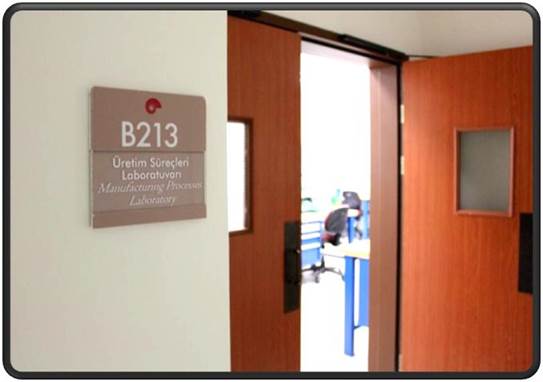
The following experimental setups are used in two courses: MECH 306 Manufacturing Processes and MECH 541 Manufacturing of Composite Materials. All of these setups, except RTM and VARTM setups, were designed and constructed by senior students in Mechanical Engineering department as a part of their senior design project. I am thankful to my students Ekrem Demirel, Sancar Ayalp, Ali Kocaman, Onur Yilmaz, Abdullah Akca, Korhan Turker, Sezer Karalar, Berk Ozkislali, Mert Nuzumlali, Caglar Erikoglu, Ali Ozturk, Yunus Keskin, Zafer Pehlivanoglu, Ozdemir Akbas, Handan Uslu, Alican Sahinkaya, Tolga Basoglu, Arek Tasciyan, Burak Suslu, Asaf Asfuroglu, Ummu Koc, Cihan Ali Yildirici and Baris Unlu for their contributions to develop this lab. I also thank my graduate students, Bekir Yenilmez, Baris Caglar, Akif Yalcinkaya, Mustafa Haboglu, Talha Akyol and Aysen Sarioglu who helped me to guide the senior students during their project development and organise the lab.
- Rockwell Hardness Test: HRA (i.e., A-scale Rockwell hardness) test is used to measure the hardness of specimens which is a measure of resistance to scratching and wear. A 60 kgf-load is applied with a diamond cone indenter.
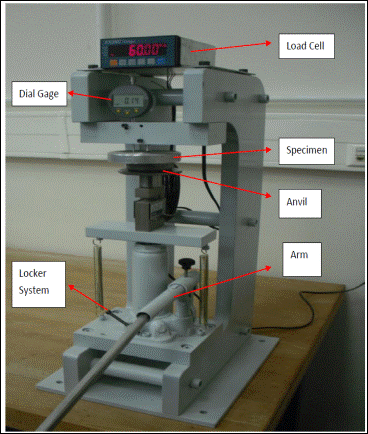
- Torsion Test: is used to determine the yield and ultimate shear stresses, and modulus of rigidity of cylindrical specimens.

- The Charpy Impact Test: is used to determine the amount of energy absorbed by a specimen during impact fracture. This absorbed energy is a measure of the material’s impact toughness. This test is also commonly used to determine the glass-transition temperature of the material, i.e., where a brittle-ductile transition is observed.
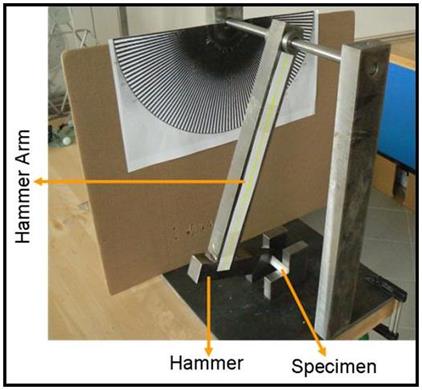
- Sand Casting: is an expendable-mold casting process. The students learn the following components of the mold & process: design of pattern, core, mold halves, sprue, riser, parting line, machining and shrinkage allowances.
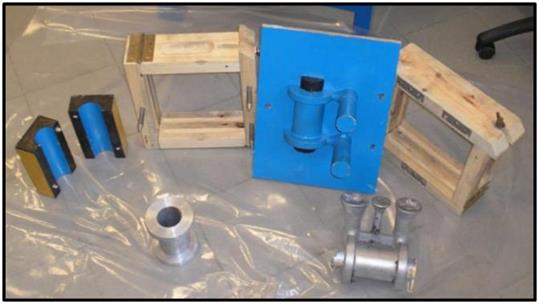
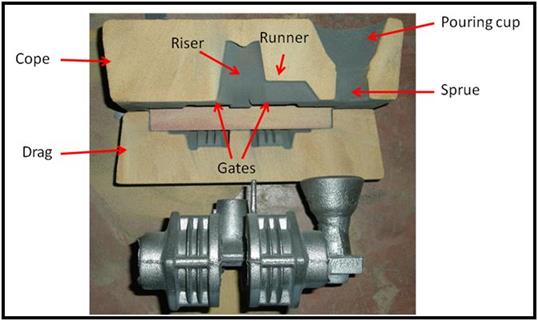
- Cold Flat Rolling: is a metal forming process in which metal stock is passed through a pair of rolls. The thickness of the plate is reduced by applying compressive forces through a set of rolls. This process increases the yield strength and hardness of a metal by orienting the grains along the surface.
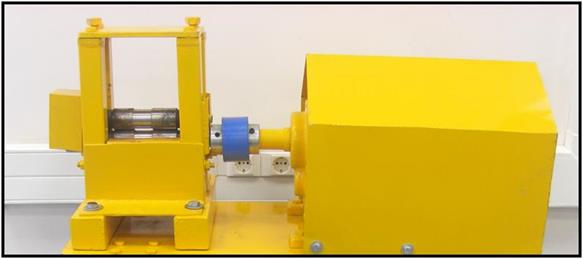
- Wire Drawing: cross section of a copper wire is reduced by pulling it through a set of dies. The students learn the fundamentals of this process by manually operating the setup.

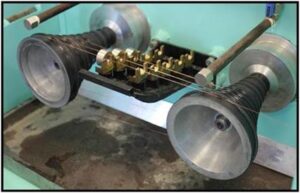
- Tensile Test Setup for Thin Wires is used to determine a material’s elastic modulus (E), ultimate tensile strength (σu), yield strength (σy) and modulus of toughness (ut). In addition, by interpreting the stress and strain curves, we can determine whether the material is ductile or brittle.

- Thermoforming is a process of forming thermoplastic sheets by a particular mold through heat and pressure applications. In this application, a plastic sheet is placed and clamped over a female mold, then heated until it softens enough and drawn into the mold by specific vacuum pressure from the bottom of the mold.

- Stretch Blow Molding of Plastic Bottles is a manufacturing process by which hollow plastic parts such as bottles are formed. A parison (a tube with one end closed) is initially manufactured in injection molding process. The parison is heated above its glass transition temperature and compressed air is blown into the parison.
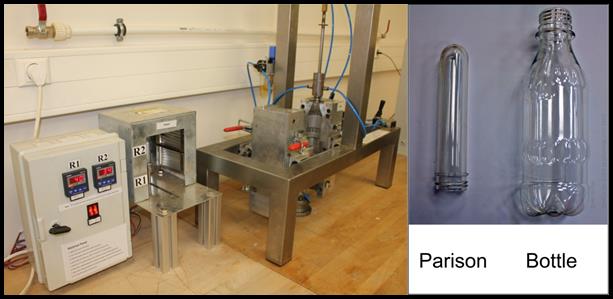
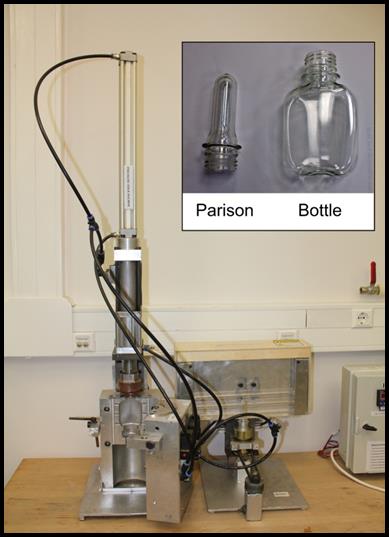
- Shearing and Drawing Processes for Sheet Metals: A copper sheet is first sheared (blanked); and then the blank is deep drawn into a forming die by the mechanical action of a punch.
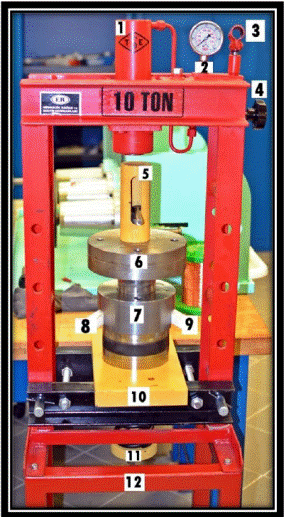
- Resin Transfer Molding: is used to manufacture glass- and carbon fiber-reinforced polymeric-matrix composite parts requiring high fiber content and good surface finish. This setup uses a solid mold, a flow-rate controlled injection machine, sensors (embedded on mold walls), and DAQ (data acquisition). It is located in ENG 255.


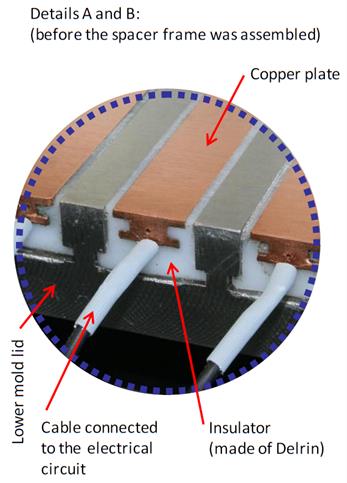
- Vacuum Assisted Resin Transfer Molding: is used to manufacture large-scale glass- and carbon fiber-reinforced polymeric-matrix composite parts which does not require high fiber content and good surface finish. This setup uses single-sided solid mold and vacuum bag, resin distribution medium and a vacuum pump. It is located in ENG 255.

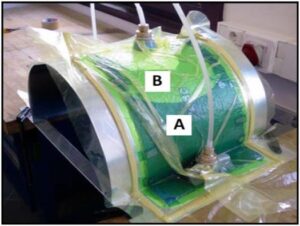
- 3-Axis Gantry type CNC Milling Machine: This demo-scale machine demonstrates how a CNC machine works. Students write and run their own G-codes to simulate the machining process. Its simple construction allows the students to see the basic mechanisms used in a simple CNC machine.

- Bridge Truss: is used to model an actual bridge, and measure the strains and stresses in critical truss members using strain gages. The students compare the experimental results with their analytical results (calculated using joint-method taught in MECH 201 Statics and Mechanics of Materials and solving the linear equation set in MATLAB taught in MECH 307 Numerical Methods for Mechanical Engineering).

- Metrology: The objective is to learn how to use the following devices: vernier caliper, micrometer, digital and analogue dial-gages, and go-not-go gages.


